Introduction
"The Adventures of Josie True" is point and click adventure games that has the player assist Josie True in travelling
through time in order to find her missing teacher, Ms. Trombone.
The game attempts to stimulate an interest in science for girls as well as teach different science and math principles.
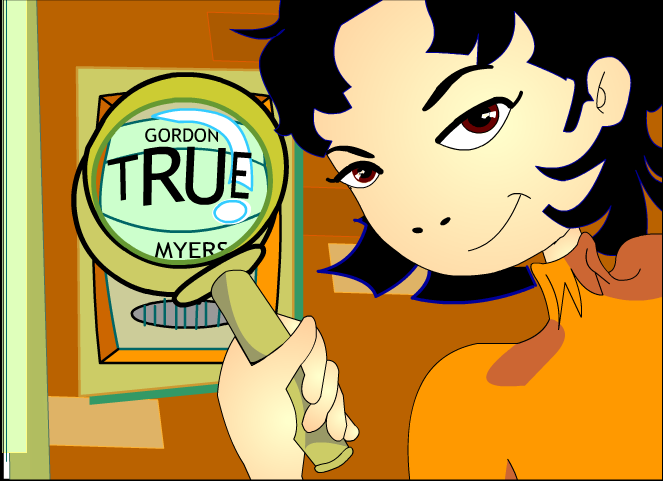
Below is a detailed analysis of this game roughly following Brian Winn's1 Design/Play/Experience framework, including:
Learning
"The Adventures of Josie True" has a few specific intended outcomes for the kids who play it.
-Teach various math and science skills.
-Stimulate girls' interest in math and science
-Educate girls about famous women scientist to act as role models.
-Encourage children of different ethnicities to embrace computer learning.
-Allow the game to be incorporated into classroom teaching exercises.
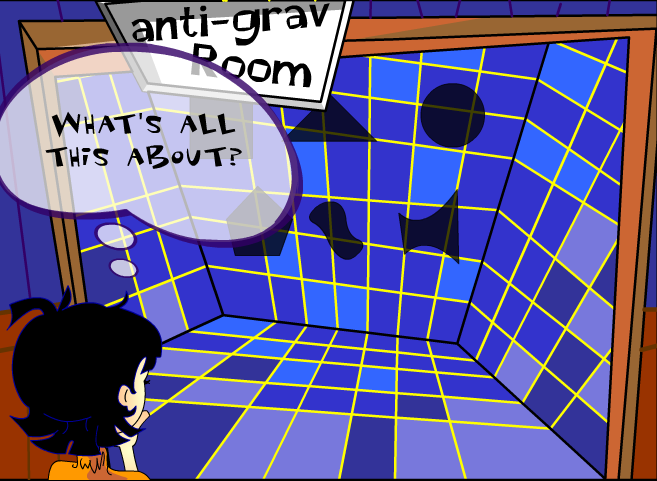
Storytelling
The game starts out with Josie True finding a note from her mother saying that the field trip that she
was supposed to have today is cancelled because her teacher, Ms. Trombone, has gone missing. Josie
decides that she has to find her teacher. This starts an adventure that leads Josie from Ms. Trombone's
house to 1920's Chicago and France. During her adventure, Josie is joined by Ms. Trombone's ICat,
who helps Josie travel through time and gives Josie additional technology to help her out. Along
her journey, also encounters other characters, including a pair of mummy thieves and Bessie Coleman, the first African American woman pilot.
The game's story is aimed at younger audiences and features a hand drawn art style similar to a children's
cartoon. This character design and world design fits the style of the game well, and is probably the best
way to grab the attention of the target audience. A 3D game or more realistic art would not have
benefitted the story telling in any way.
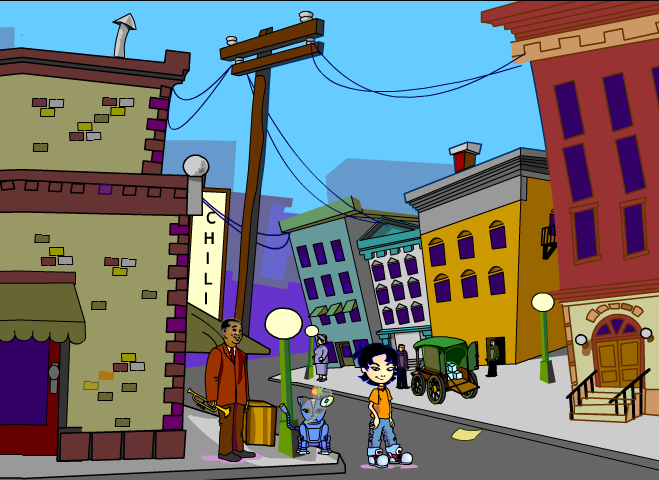
The story does a poor job of enhancing the intended learning. The story is usually simple, though it
does occasionally become confusing due to fact it forgets to explain to the player why she is completing
a certain task. However, the main problem is that forcing the player to walk around exploring cities and
looking for items gets in the way of learning about science and technology. For a history game this would
be okay, as it could immerse the player into the time period and help with learning. But for a science game,
this type of story structure is constantly at odds with the intended learning outcome of educating girls about
science. One high point is the inclusion of an interaction with Bessie Coleman, which gives the players the
sense that Bessie was a real person and shows the intended players (younger girls) that there were and are
many influential women in science and technology.
Gameplay
"The Adventures of Josie True" plays out much like a point and click adventure game. In each environment, the player can move Josie around to find new objects, buildings, and people to talk to. If they find an important person, item, or building, they will be given a mini-game to play. Each mini-game is different. One mini game has the player measuring ingredient to make chili, while another has the player fixing circuits to turn the lights back on in a building. Upon completion of one of these mini-games, the player gets an item that they need to continue in the game. For example, fixing the organ in a church earn the player a ticket to take a boat over to Paris. The goal of the game is to find Josie teacher, Ms. Trombone.
Each mini-game is meant to teach a specific science or math skill that can be transferred out of the game. Some of the mini-games accomplish this task, but most do not. The chili making mini game teaches adding fractions and decimals. The game will tell the player to add an amount of a certain ingredient to the pot using the measuring cups they have been given. For example, they may need to add 13/5 a cup of water, but only have 1/2 a cup and 1/5 a cup measurements. This activity works because it easily transfers over real life and more interesting than doing fraction problems on paper. Other mini-games do not fair so well in terms of transfer. One of the first mini-games the player does involves picking up blocks of ice using a pulley system. Each block of ice weighs a different amount, and the game requires the player to decide how many wheels to have in the pulley system. While this does have some possible educational value, it basically comes down to matching the amount of weight you can pick up against the weight of the block. The player can completely ignore the pulleys and just look at the numbers to complete the game. It also does not help that the game never bothers to explain why adding more wheels to the pulley increases the amount of weight it can lift. This is a recurring problem throughout the game. It rarely bothers to explain the concepts it is attempting to teach.
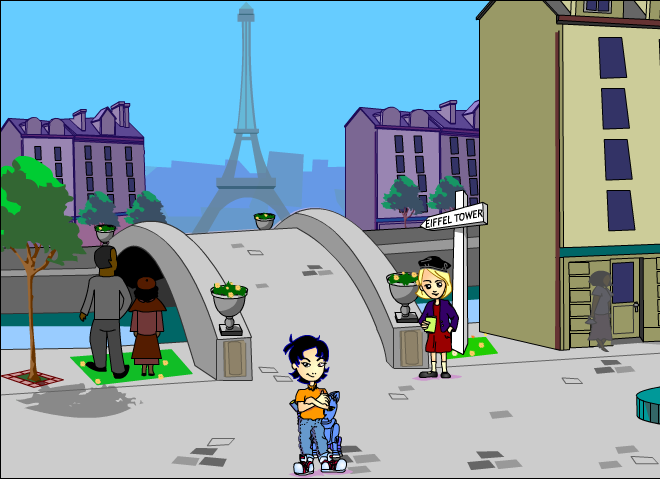
Another major issue with the gameplay is that there are no tutorials in the game. They game just throws
you into each mini-game without explaining what you need or how you can do it. There is a demo mode, which
shows briefly how to play the game, but it is rarely helpful in how to play each game. It also does not
help that there are a few mini-games that lack a demo mode all together, which is frustrating. For a
game for younger players, this lack of instruction is annoying and puts up a major barrier to enjoying the gameplay.
However, even if there was an excellent tutorial system and all of the mini-games were good simulations of what they were attempting to teach, it would not matter. That is because every single mini-game has a button in the top-right or left hand corner that says "WIN." Clicking this button automatically completes the mini-game and gives the player the item they need to continue in the story. For this reason, there is no reason to actually play the mini-game and learn the concepts they try to teach. Players will likely skip most of the games because the games are often a chore to play and they get the same reward for playing as for not playing.
User Experience
The user interface tries to keep things simple, for the most part. Like many point-and-click adventures,
moving around Josie in the exploration portion of the game is done solely with the mouse. To move her,
the player puts their mouse over her, and drags her to where they want her to go. It is a bit strange at
first, but it works well enough. The player can then click on building to enter and people to talk to them.
The other part of the user interface during exploration is ICat. By clicking on ICat, the player brings
up a menu that has various information in it. There is a journal where the player can write notes, a
database containing various information, a map of the game which shows the player's progress, a general
help page that tells the user how to play the game, and a calculator. It can also be used to look at
the clues and items Josie has. The database is especially interesting as it is supposed to hold information
on the various thing Josie encounters in the world, but it never had any information in it. This could have
been a place to have meaningful educational content for kids who want it. Instead it is just pointless.
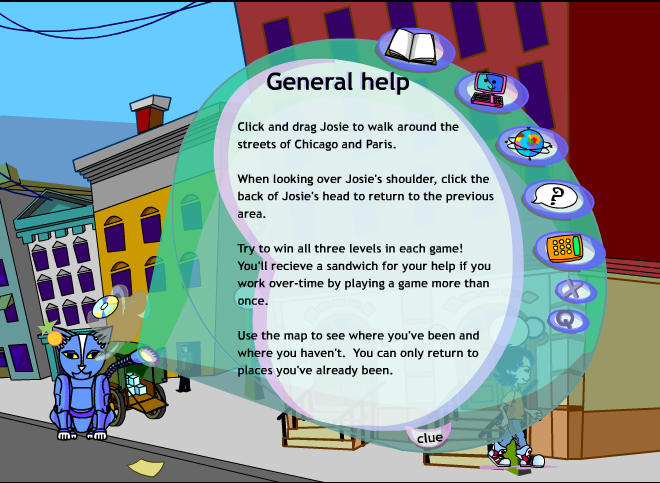
"The Adventures of Josie True" is series of mini-games. Because of this, each of the mini-games has different
interface controlling things. However, there are some things that each game has in common. In the bottom left
corner of the screen, there is the ICat button. This acts similarly to how it does in the exploration portion
of the game. It holds information on how to play the mini-game and allows the player to view a demo of the current
mini-game. The other common part of the interface is the WIN button in the mini-games. Hitting this button,
located at one of the top corners of the screen depending upon the mini-game, allows the player to skip the game.
Most of the mini-games in "Josie True" involve pointing and clicking various things on the screen. However,
many of the games don't specifically explain what clicking on an item does. For example, in one mini-game,
the player must tune the pipes of an organ. In this game, the player has to adjust the pipes to get the correct pitch.
However, it is extremely difficult to get the pipe to the exact correct pitch. The game, nor the demonstration,
explains that you have a tool on the side of the screen for making slight adjustments to the pitch. Other mini-games
never explain to you that you have to click on Josie to submit you answer.
This lack interface explanations makes the game a very frustrating experience.
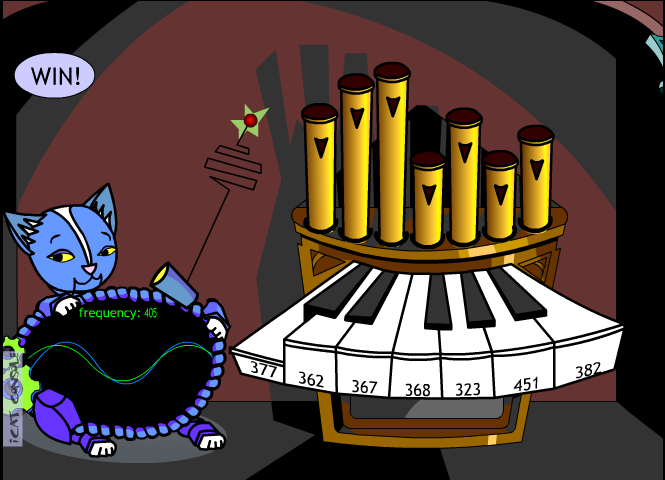
The interface design for “The Adventures of Josie True” does not work and it severely interferes with the learning, especially for the younger audience that the game was targeting. The design is sluggish and hard to use, and many kids who use will likely get frustrated and begin to hit the "WIN" button. The interface interferes with learning because it makes the game hard to use and enjoy. Younger children are not going to put in the effort to get the small amount of educational material that the game has to offer.
Technology
The game was built using Macromedia Flash. This was probably the best choice for an educational
game aimed at a large audience. Using Flash allows almost anyone to log on and start playing the
game immediately. The technology makes the game available both at school and at home. The game
did not need any 3D graphics or advanced technology to accomplish its gameplay and teaching goals.
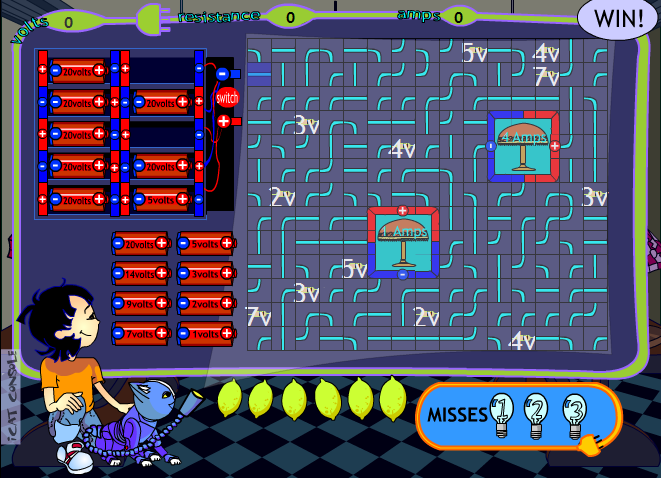
Assessment
There was one serious assessment of Josie True on tiltfactor.org2. The article mostly went through the various design decisions made and the learning goals of the game, but it did go over some research that was done regarding the game. The first test done was to compare the performance on fraction problems after playing the game and after doing worksheets on the web. This test was done on the target audience, girls aged 9 to 11. The research found that the participants who played the fractions game in Josie True got an average of 9.7% more answers correct. However, this does not mean that game taught the children fraction any better. This test did not examine transfer. It just looked to see how each participant performed within the context of the game or web worksheets. These results are also easily accounted for, as the game told players when they forgot to reduce the fractions, which caused each participant playing “Josie True,” to not make mistakes.
distracted. The test compared “Josie True” to another similar educational game, a game from the Jump Start Series.
The test found that the children played Josie True an average of 1.34 times longer than the other game.
The participants played Josie True for an average of 17.6 minutes, and played the other game for 13.1 minutes
. The participants also reported being more interested in math and science after playing the game,
although there are no formal statistics on this.
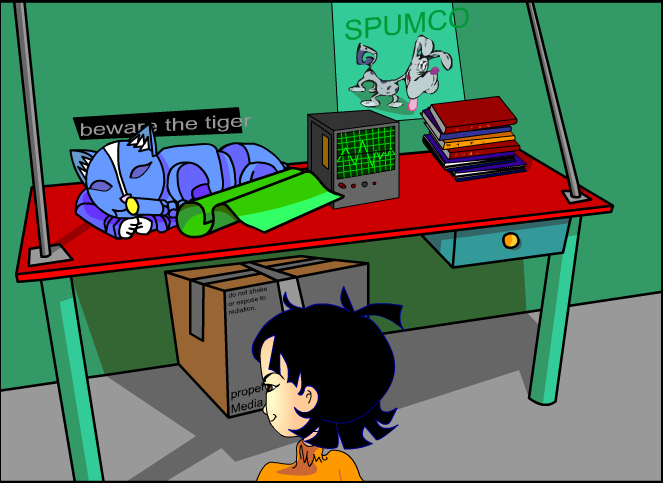
The next step in the assessment stage would to do more formal testing in order to make be certain of the statistics above. The assessments would need to do separate measurements for each of the concepts the game has taught. This means that there needs to be an exam administered after playing the game or doing the web worksheets for the fractions. This would determine whether or not the game successfully improved transfer of the knowledge. This would need to be done for all of the different mini-games, including circuits, tangrams, and organ tuning. The testing would also need to investigate whether or not the players wanted to play again after their initial exposure to the game. This would need to be examined over time, to see if the game really could hold the participants interest. Last, and probably the most important thing to investigate, would be see if the game made girls more interested in science and mathematics. Over time, a study should investigate whether or not the girls had taken a larger interest in science through surveys, grade scores, and enrollment in after school programs. Change over time is what “Josie True” hopes to achieve, and that would be the best away to see the long term results in the participants.
Conclusion
“The Adventures of Josie True” is a serious game that feels like a work in progress. There is a foundation there, but that is all. The storyline is occasionally confusing and if not likely to attract many girls or boys to it. However, Josie True and the game historical figures are likeable characters and are easy enough for the target audience to identify with. The exploration game elements work well enough, but the mini-games, which are supposed to be isolated simulations, are frustrating to playing, boring, and don’t usually teach or enhance their intended skills. However better design mini-games that are more integrated in the story, are more fun to play, and, most importantly, teach things could be useful for transferring knowledge to the target audience. It also does not help that the game feels incomplete.
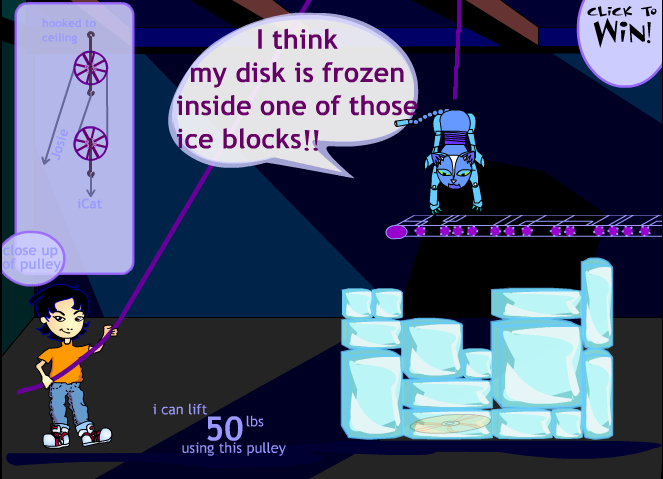
The developers of this game need to reevaluate their goals. Making their goals and game work in tandem,
instead of against each other, the developers could make a useful educational tool instead a poor game and
teaching tool. I would first recommend getting rid of the “WIN” button. This button makes the educational
games pointless. This is a feature that should wait to appear until it is clear the student is struggling
with the task. They also need to simplify their user interface to make navigating the world and playing the
mini-games much easier. Finally, the developers need to make the mini-games simulate the educational concepts,
rather than just use the game mechanics to sort of approximate the actual task. If these things were in place,
“The Adventures of Josie True” could be something very worthwhile.
